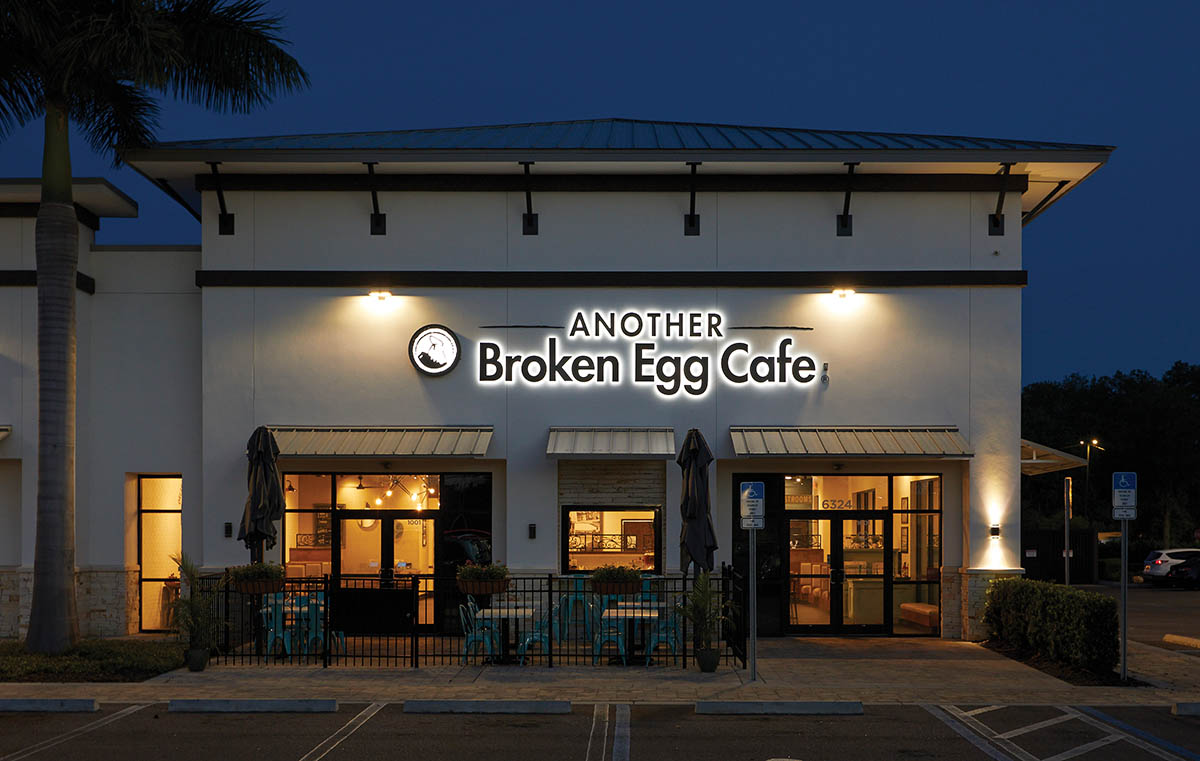— Interview with Jeff Sturgis —
Another Broken Egg Cafe understands that people crave more in-person, meaningful experiences post-pandemic — and its new “New South” prototype meets people exactly where they want to be.
Even before the pandemic, Another Broken Egg Cafe had a sense of where the industry was headed, and what its customers would want. In 2019, it launched a new prototype designed to elevate the in-person brunch experience, with an expanded outdoor patio, as well as a more robust off-premise dining business. The decisions would prove both prophetic and profitable. Today, the brunch business is booming, and Another Broken Egg Cafe is at the forefront of this growth, with plans to open more than 15 new units next year.
R&R: How many restaurants does Another Broken Egg Cafe operate today? How many are company owned versus franchised? What do you forecast in terms of new unit growth in 2023?
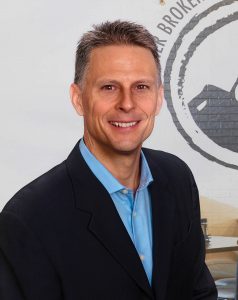
Jeff Sturgis, Another Broken Egg Cafe
Jeff Sturgis: We have 82 open cafes, 37 corporate and 45 franchised. We anticipate opening 15-17 new cafes in 2023.
R&R: Just before the pandemic, the company unveiled a new “New South” prototype that was designed to elevate the brunch experience for customers. Please discuss those changes — and how those changes have been beneficial during the pandemic.
Sturgis: There were many changes to our restaurants with the introduction of the New South prototype — these include updating and modernizing the furniture and décor, as well as the lighting packages.
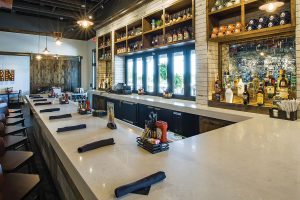 In remodeled or new restaurants, we’ve also moved the bar to the front or side of the space so that it shares a pass-thru window with the patio. This allows the bar to directly service both the interior and exterior bar seating. The older layout had the bar at the back adjacent to the kitchen. Where the space allows it, we are using an open ceiling with exposed duct work. The New South prototype incorporates more flexible and varied seating options including booths, banquets, raised seating near the bar area, and a variety of two-, four- and six-top tables to provide flexibility for the large groups we often get due to the nature of the brunch dining experience. We also have expanded the patio area in some cases where space provides opportunity for more seating and enclosed the patio to some degree with awnings and shades. This allows our guests and staff to have access to this space during a longer time of the year, especially in cold weather climates.
In remodeled or new restaurants, we’ve also moved the bar to the front or side of the space so that it shares a pass-thru window with the patio. This allows the bar to directly service both the interior and exterior bar seating. The older layout had the bar at the back adjacent to the kitchen. Where the space allows it, we are using an open ceiling with exposed duct work. The New South prototype incorporates more flexible and varied seating options including booths, banquets, raised seating near the bar area, and a variety of two-, four- and six-top tables to provide flexibility for the large groups we often get due to the nature of the brunch dining experience. We also have expanded the patio area in some cases where space provides opportunity for more seating and enclosed the patio to some degree with awnings and shades. This allows our guests and staff to have access to this space during a longer time of the year, especially in cold weather climates.
The patio changes were definitely further driven by the pandemic and the guests’ desire to still dine out, but be in a more open environment.
R&R: The breakfast/brunch/daypart segment seems to be weathering the pandemic years better than other restaurants — a rare bright spot in the industry. What makes breakfast more resilient or appealing?
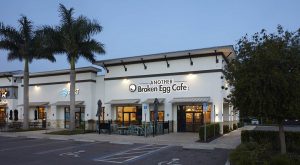 Sturgis: There are a few things here — one, there is just less competition in the breakfast/brunch segment. The segment is not crowded or overbuilt like the fast-casual burger, pizza and chicken segments. So, as we have seen an increase in people dining out for breakfast and brunch, we are able to secure a strong share of this business. There also seems to be a desire for indulgence and gathering with friends and family that has driven people to the segment and ABE in particular. The increase in the work-from-home population has also contributed to increased guest count and sales, as people are able to eat out for breakfast and brunch more during the week due to greater work flexibility. The pandemic also drove a huge increase in off-premise business overall in the restaurant industry, but especially in the breakfast/brunch. This category was really under-represented in the off-premise channels before the pandemic.
Sturgis: There are a few things here — one, there is just less competition in the breakfast/brunch segment. The segment is not crowded or overbuilt like the fast-casual burger, pizza and chicken segments. So, as we have seen an increase in people dining out for breakfast and brunch, we are able to secure a strong share of this business. There also seems to be a desire for indulgence and gathering with friends and family that has driven people to the segment and ABE in particular. The increase in the work-from-home population has also contributed to increased guest count and sales, as people are able to eat out for breakfast and brunch more during the week due to greater work flexibility. The pandemic also drove a huge increase in off-premise business overall in the restaurant industry, but especially in the breakfast/brunch. This category was really under-represented in the off-premise channels before the pandemic.
R&R: Who did you work with on the New South design? Outsourced third-party or do you have an in-house design team?
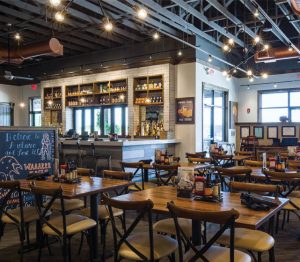 Sturgis: Our primary design partner was a firm called Barker/Nestor with significant input and collaboration with the brand leadership and our franchisees.
Sturgis: Our primary design partner was a firm called Barker/Nestor with significant input and collaboration with the brand leadership and our franchisees.
R&R: What kind of feedback are you getting from franchisees about the new prototype?
Sturgis: Overall the franchisees have been very excited and receptive to the new image, and we are seeing that in the future growth coming from our existing franchisees.
R&R: And you’ve consistently seen increases in same-store sales since the New South prototype came along…tell us about that.
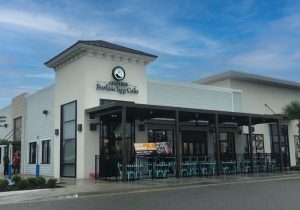 Sturgis: Well, the new design certainly modernized our look and helped us appeal to a broader guest base, as well as encouraged our guests to experience more of our menu offerings and the enhanced full bar. The open, inviting atmosphere along with the menu motivates our guests to visit us more often and increase their spending while in cafe.
Sturgis: Well, the new design certainly modernized our look and helped us appeal to a broader guest base, as well as encouraged our guests to experience more of our menu offerings and the enhanced full bar. The open, inviting atmosphere along with the menu motivates our guests to visit us more often and increase their spending while in cafe.
R&R: How many existing units have been converted so far to the new look?
Sturgis: We have remodeled 19 cafes to the new look in addition to the 26 new cafes that have opened with the new prototype.
R&R: Tell me a little about the history of the company and how the concept came about.
Sturgis: The brand was founded in 1996. It was the vision of our founder to create an upscale breakfast brunch restaurant with a focus on an elevated, indulgent menu and a full bar offering that he saw missing from the overall full-service dining landscape. He was ahead of his time and helped create a concept that grows stronger every day.
R&R: Does Another Broken Egg Cafe plan any non-traditional openings in airports, stadiums, college campuses? (I see you’re opening in Athens, Georgia?)
Sturgis: At this time, a non-traditional plan is not in place. We see plenty of opportunity for growth for our full cafes. The Athens location is in the city of Athens, and is not on or affiliated with the university.
R&R: To adapt and pivot during COVID, did you bring in any new kitchen equipment, offer new digital conveniences, or make other operational efficiencies/adjustments?
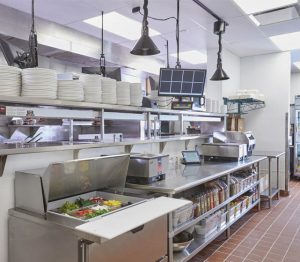 Sturgis: Like all concepts, we made a number of changes and adjustments to our operations to support and respond to the changes in the guest expectations and use of our cafes. We engaged with and implemented all off-premise channels including third-party delivery, online ordering, catering and others. We added off-premise specific KDS units in the kitchen, a dedicated off-premise expo area and, in many cases, we have added a dedicated off-premise employee to the cafe operating team to handle all of the off-premise activity. Furthermore, there are now staging and storage areas near the main door to the cafe, which handle the guests coming in for off-premise and, in cases where the site allows for it, have incorporated into our cafe layout design a second or third entrance to be used primarily for off-premise business.
Sturgis: Like all concepts, we made a number of changes and adjustments to our operations to support and respond to the changes in the guest expectations and use of our cafes. We engaged with and implemented all off-premise channels including third-party delivery, online ordering, catering and others. We added off-premise specific KDS units in the kitchen, a dedicated off-premise expo area and, in many cases, we have added a dedicated off-premise employee to the cafe operating team to handle all of the off-premise activity. Furthermore, there are now staging and storage areas near the main door to the cafe, which handle the guests coming in for off-premise and, in cases where the site allows for it, have incorporated into our cafe layout design a second or third entrance to be used primarily for off-premise business.
R&R: Which pandemic-era changes in the restaurant world do you anticipate lasting even past the present crisis?
Sturgis: Off-premise is here to stay overall and is expected to be a meaningful part of our business going forward. Optimizing the kitchen layout, flow and operations to support the dine-in and off-premise business will continue to be a priority with our new designs. We remain mostly dine-in, so it is critical to make sure we take care of all of our guests no matter how they are using us.
R&R: Describe how Another Broken Egg Cafe handles repair and maintenance. Do you have an in-house maintenance department or do you rely on vendors? Or do franchisees handle R&M individually?
Sturgis: We are currently evaluating third-party R&M. Right now, our corporate staff and our franchisees mostly handle repairs and maintenance themselves.
R&R: Do you use local or national vendors? Why?
Sturgis: We use both, depending on the particular product or service. The cost and quality of the item matter, so we will do whichever is best for the business and our guest.
R&R: How has everyday restaurant maintenance (jan/san and otherwise) evolved since 2020?
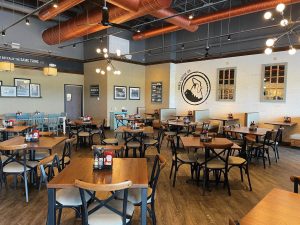 Sturgis: There is certainly an added emphasis on general sanitization, but we have always focused on and taken seriously the need to provide a clean, comfortable environment for our guest and employees.
Sturgis: There is certainly an added emphasis on general sanitization, but we have always focused on and taken seriously the need to provide a clean, comfortable environment for our guest and employees.
R&R: Does Another Broken Egg Café consider environmental sustainability in its new buildout? Such as more efficient lighting and HVAC/refrigeration, biodegradable packaging, recycling programs, EV charging options for customers, etc.?
Sturgis: We haven’t necessarily made decisions purely based on these conditions, but definitely factor them into our decision-making process to make sure we are providing the right balance and being good stewards of the environment.
R&R: What do you enjoy most about your job day to day?
Sturgis: I really enjoy seeing the tangible fruits of our team’s efforts — new cafe openings, happy and successful franchisees, and happy guests. It’s very satisfying to drive by a successful cafe and know that myself and our team played an important role in that success.
R&R: What goals have you set for your team, short term and long?
Sturgis: We are focused on getting to and beyond 100 open units, and setting our sites on consistently opening 20-30 successful new locations a year.
— This article originally appeared as the cover story of the November 2022 issue of Retail & Restaurant Facility Business magazine. Email the editor, Katie Lee, at [email protected].

